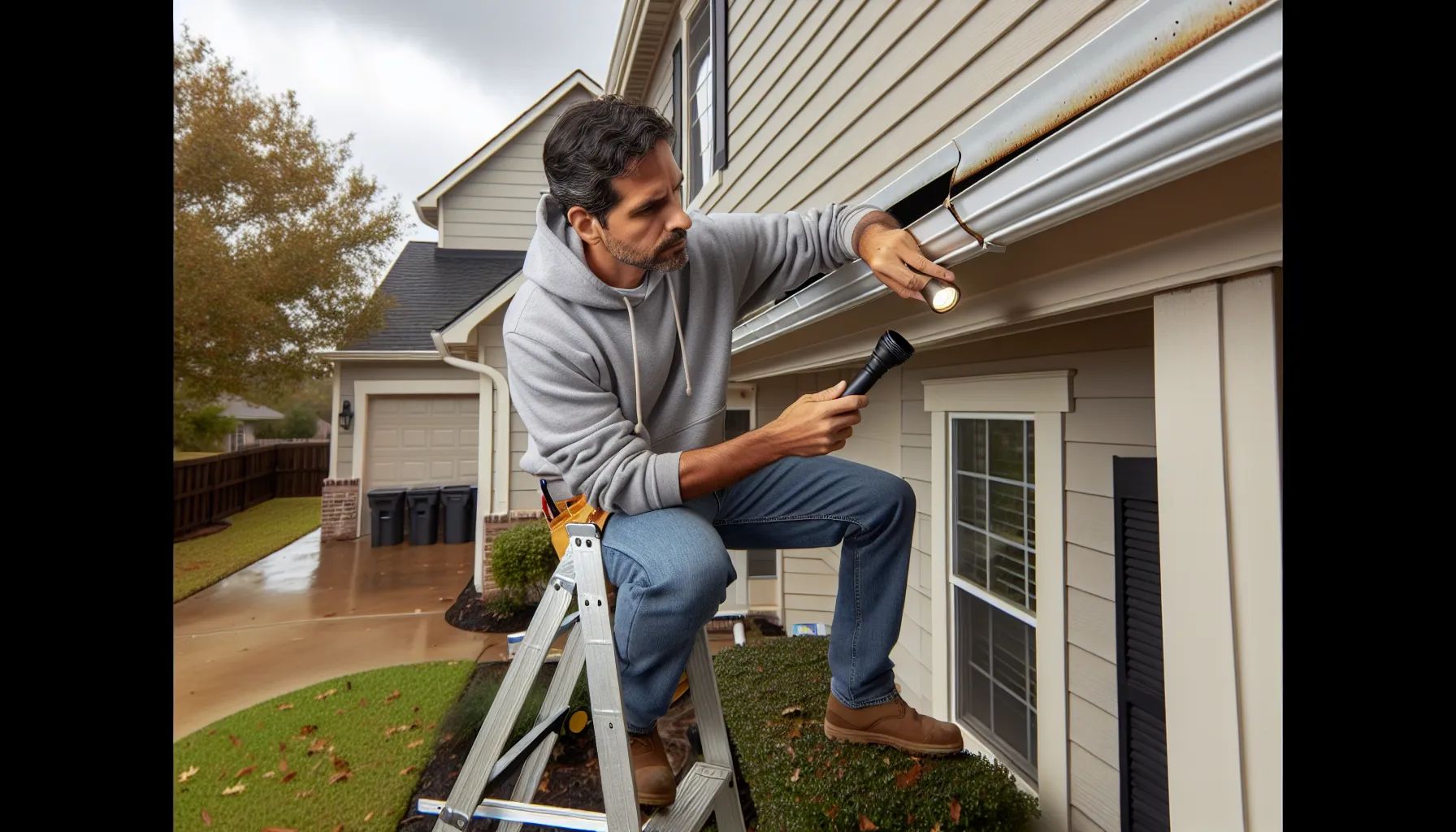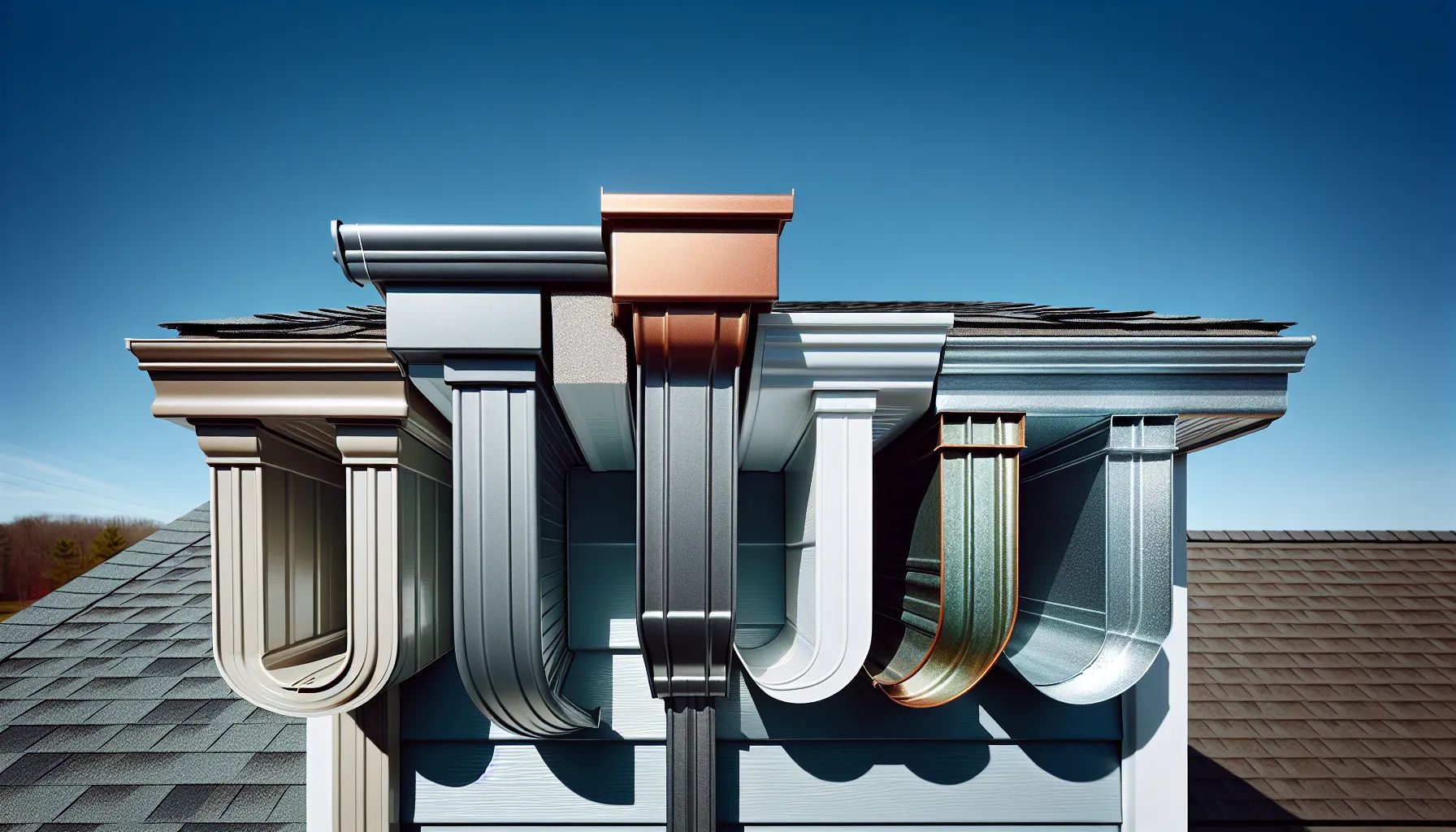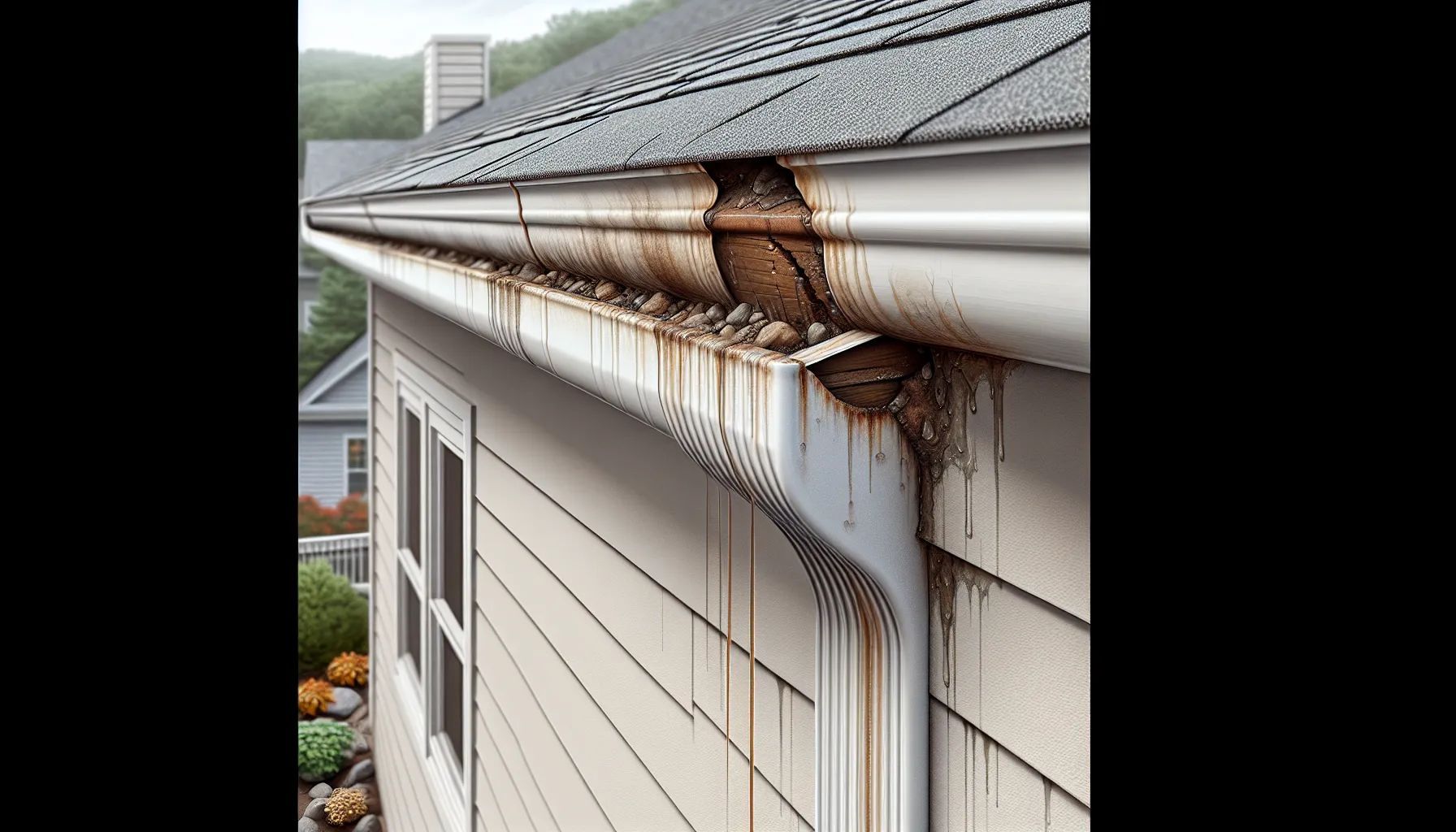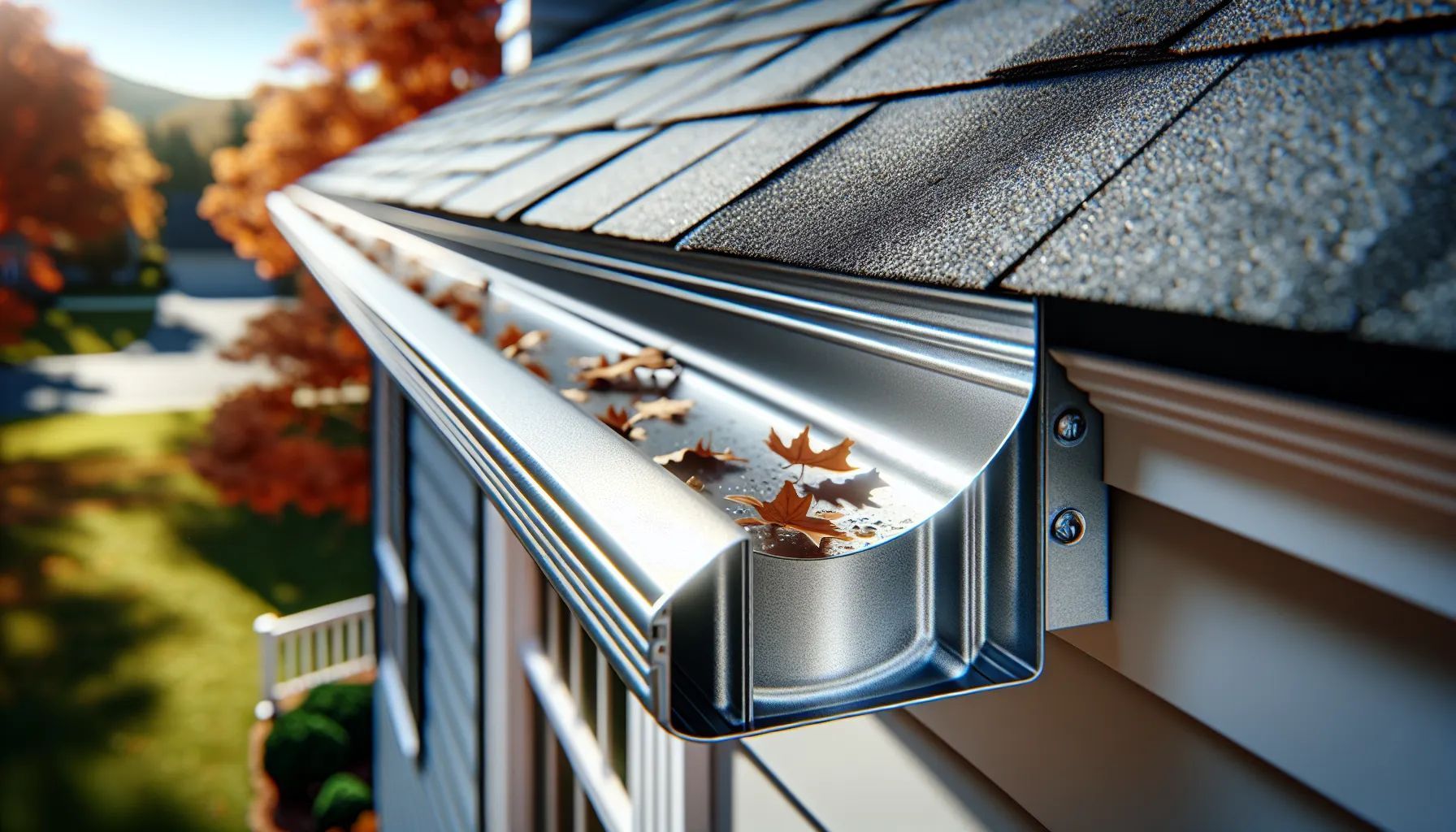How Often Should Gutters Be Replaced

How often should gutters be replaced? The answer depends on several factors, from the material you chose during installation to the climate where you live. We've seen gutters that have lasted decades with minimal intervention, while others needed replacement within just a few years. Understanding the lifespan of your gutter system and recognizing early warning signs can save you from costly water damage and help you plan for this important home maintenance task. In this guide, we'll walk you through the expected lifespans of different gutter materials, the telltale signs that replacement is due, and practical tips to maximize the years you get from your current system.
Average Lifespan of Different Gutter Materials

The material you choose for your gutters plays a significant role in how long they'll protect your home. Each type comes with its own strengths, vulnerabilities, and price point. We'll break down what you can expect from the most common gutter materials.
Aluminum Gutters
Aluminum gutters are the most popular choice for residential properties, and for good reason. They typically last between 20 and 30 years with proper care. These gutters resist rust, making them suitable for areas with regular rainfall.
The lifespan of aluminum gutters varies based on thickness. Thicker gauges provide better durability and can reach the upper end of that range. We recommend looking for .032-inch thickness for optimal performance. Climate also matters, homes in moderate climates often see their aluminum gutters reach 30 years, while those in areas with harsh winters or intense sun exposure might need replacement closer to the 20-year mark.
Vinyl Gutters
Vinyl gutters offer an affordable option for homeowners on a budget, but they don't last as long as metal alternatives. You can expect vinyl gutters to serve your home for 10 to 20 years.
Temperature extremes are vinyl's biggest enemy. In regions with hot summers, UV rays cause the material to become brittle and crack. Cold winters present their own challenge, frozen water expands inside the gutters, causing warping and splits. We've noticed that vinyl gutters in moderate climates can approach that 20-year mark, while those in areas with temperature swings often need replacement after just 10 to 15 years.
Another consideration: vinyl gutters can sag over time as the material weakens, especially on longer runs without adequate support.
Copper and Steel Gutters
Copper gutters represent the premium end of the market, and their longevity reflects that investment. These gutters can last 50 years or more, often outliving the homes they protect. Copper develops a protective patina over time that actually enhances its resistance to corrosion. The upfront cost is substantial, but if you plan to stay in your home long-term, copper gutters might be the last set you'll ever install.
Steel gutters, specifically galvanized steel, offer a middle ground between aluminum and copper. They last about 20 to 25 years, depending on the quality of the protective coating. The zinc coating that galvanizes the steel prevents rust, but once that coating wears through, usually from years of water exposure and minor abrasions, the steel underneath begins to corrode. We've found that steel gutters in dry climates can reach 25 years, while those in coastal areas with salt air may need replacement sooner.
Signs Your Gutters Need Replacement

Even gutters that haven't reached their expected lifespan can fail prematurely. Recognizing these warning signs helps you address problems before they cause serious damage to your home's foundation, siding, or landscaping.
Visible Cracks, Holes, and Rust
Small cracks might seem harmless, but they grow larger with each freeze-thaw cycle and every season of water flow. A few small cracks scattered across your gutter system indicate that the material has aged beyond effective repair.
Holes are even more serious. They often start as rust spots on metal gutters or stress points on vinyl systems. Once a hole forms, water pours through directly onto the area below, defeating the entire purpose of having gutters. If you're patching holes regularly, replacement makes more financial sense than ongoing repairs.
Rust deserves special attention. Surface rust on steel gutters can sometimes be treated, but when rust eats through the metal, the gutter has lost its structural integrity. We always check inside the gutter trough as well, rust hidden from view often spreads faster than what you see on the exterior.
Sagging or Pulling Away From the Roof
Gutters should sit snug against your fascia board with a slight downward slope for proper drainage. When sections sag or pull away, it signals that the hangers have failed, the gutter material has weakened, or both.
Sagging creates low spots where water pools instead of flowing to downspouts. This standing water adds weight that worsens the sag, creating a cycle of deterioration. The pooled water also provides a breeding ground for mosquitoes and accelerates corrosion or material breakdown.
If tightening the hangers doesn't solve the problem, the gutters themselves have likely lost their structural integrity. This is especially common with older vinyl gutters that have become brittle or aluminum gutters that have thinned from years of water exposure.
Water Damage and Pooling Around Your Foundation
Your gutters exist to channel water away from your home's foundation. When you notice water stains on your siding, erosion in your landscaping directly below the roofline, or water pooling near your foundation after rain, your gutters aren't doing their job.
Foundation issues are particularly concerning. Water that seeps into the soil around your foundation can cause cracks, settling, and even basement flooding. The cost of foundation repairs dwarfs the expense of new gutters, making replacement a wise investment when you spot these signs.
We also look for paint peeling or wood rot on fascia boards and soffits. These symptoms indicate that water has been overflowing or leaking from the gutters for an extended period, likely causing damage to the gutter mounting points as well.
Factors That Affect Gutter Replacement Timing

The lifespans we mentioned earlier are averages. Your specific gutters might last longer or need replacement sooner based on several conditions. Understanding these factors helps you predict when you'll need to budget for new gutters.
Climate and Weather Conditions
Extreme weather shortens gutter lifespan across all materials. Heavy snow loads stress gutter hangers and can bend or crack the gutter trough. Ice dams form when heat from your attic melts snow on your roof, and the water refreezes in gutters, expanding and contracting the material.
Areas with intense sun exposure see accelerated UV damage, especially on vinyl gutters. The constant heating and cooling causes expansion and contraction that fatigues the material over time.
We've also noticed that homes in regions with frequent severe storms, high winds, hail, or falling branches, need gutter replacement more often. A single major storm can damage gutters that would otherwise have years of life remaining.
Coastal properties face additional challenges from salt air, which accelerates corrosion on metal gutters. If you live near the ocean, expect your steel or aluminum gutters to fall on the shorter end of their lifespan range.
Maintenance and Cleaning Habits
Regular maintenance is the single biggest factor you can control to extend gutter life. Gutters filled with leaves, twigs, and debris hold moisture against the material, speeding up rust on metal gutters and degradation on vinyl ones.
We recommend cleaning gutters at least twice per year, once in late spring and again in fall after leaves have dropped. Homes surrounded by trees might need quarterly cleaning. The small investment of time or the cost of professional cleaning extends your gutter lifespan by years.
Neglected gutters also become heavy. The weight of wet debris can pull gutters away from the fascia and stress the hangers. We've seen gutters that could have lasted 25 years need replacement after just 15 because they were never cleaned.
Quality of Installation
Even the best gutter materials won't reach their full lifespan if they're installed incorrectly. Proper installation includes adequate hanger spacing (typically every 24 inches), correct slope for drainage (about a quarter inch per 10 feet), and secure attachment to the fascia.
Poorly installed gutters develop problems quickly. Improper slope causes water to pool, accelerating material breakdown. Insufficient hangers lead to sagging. And if the gutters weren't properly sealed at the seams, leaks develop within the first few years.
When we evaluate gutter systems, we can often tell which ones were installed by professionals and which were DIY projects. The professional installations consistently outlast those that cut corners, regardless of the material used.
When Repair Is Sufficient Versus Full Replacement
Not every gutter problem requires complete replacement. Understanding when repairs will suffice and when you need new gutters helps you make cost-effective decisions.
Minor issues like loose hangers, small leaks at seams, or isolated cracks can often be repaired. We can reattach hangers that have pulled loose, apply gutter sealant to small leaks, and patch individual cracks. If the damage affects less than 30% of your gutter system and the rest shows no signs of aging, repairs make sense.
But, widespread problems indicate that your gutters have reached the end of their useful life. If you're seeing multiple sections with cracks, rust in various locations, or sagging along multiple runs, replacement is the better choice. Continuing to patch aging gutters becomes a money pit, you'll spend nearly as much on ongoing repairs as you would on new gutters, without getting the reliability of a new system.
The age of your gutters matters too. If your aluminum gutters are 25 years old and develop a problem, replacement makes more sense than repair, even if the damage is localized. You'll likely face additional issues soon anyway.
We also consider whether you're planning other exterior work. If you're replacing your roof, painting your home, or doing other major exterior projects, it makes sense to replace aging gutters at the same time, even if they're still marginally functional. This approach saves on labor costs and ensures all your exterior systems have similar remaining lifespans.
One more factor: if your current gutters are undersized for your roof area or poorly designed for your home's water management needs, replacement gives you the opportunity to upgrade to a system that works better, even if your old gutters could limp along for a few more years.
How to Extend the Life of Your Gutters
We've helped homeowners add years to their gutter systems through consistent maintenance and smart upgrades. These strategies work across all gutter materials.
First, clean your gutters regularly. We can't stress this enough, it's the single most important thing you can do. Remove leaves, twigs, and sediment at least twice per year. Consider installing gutter guards if you have significant tree coverage. While guards aren't maintenance-free, they reduce the frequency of cleaning and prevent large debris from accumulating.
Inspect your gutters after major storms. Look for new damage, loose hangers, or clogs that developed from storm debris. Addressing small problems immediately prevents them from becoming major issues.
Ensure your downspouts drain properly. The water should flow at least four to six feet away from your foundation. Use downspout extensions or splash blocks if needed. When downspouts don't drain properly, water backs up in the gutters, adding weight and accelerating wear.
Check and maintain the slope of your gutters. Over time, hangers can work loose, causing sections to level out or even slope backward. This creates standing water that damages the gutter material. Adjust hangers as needed to maintain proper drainage.
Trim back tree branches that hang over your roof. This reduces the amount of debris that falls into your gutters and prevents damage from falling limbs during storms. As a bonus, it also reduces the likelihood of animals accessing your roof and gutters.
For metal gutters, consider applying a protective coating. After cleaning, you can paint or seal the gutters to provide an extra layer of protection against rust and corrosion. This is especially valuable for steel gutters as they age.
Finally, address repairs promptly. Small leaks and minor damage become major problems if left unattended. The cost of fixing a small issue is always less than repairing the water damage that results from ignoring it.
Conclusion
Gutter replacement timing varies significantly based on the material you have installed, your local climate, and how well you've maintained the system. Aluminum gutters serve most homes well for 20 to 30 years, while vinyl gutters typically need replacement within 10 to 20 years. Copper gutters can last 50 years or more, and steel gutters fall in the 20 to 25 year range.
Watch for warning signs that indicate your gutters need replacement sooner than expected. Visible cracks, holes, and rust signal material failure. Sagging sections or gutters pulling away from the roof show structural problems. And water damage around your foundation means your gutters aren't protecting your home anymore.
Watch for warning signs that indicate your gutters need replacement sooner than expected. Visible cracks, holes, and rust signal material failure. Sagging sections or gutters pulling away from the roof show structural problems. And water damage around your foundation means your gutters aren't protecting your home anymore.
When problems do develop, evaluate whether repair or replacement makes the most sense. Limited, localized damage on relatively new gutters can be repaired cost-effectively. But widespread issues or aging systems that have reached 70-80% of their expected lifespan warrant full replacement.
Your gutters play a critical role in protecting your home from water damage. Staying aware of their condition and acting when replacement becomes necessary prevents far more expensive repairs to your foundation, siding, and landscaping. Schedule regular inspections, keep up with cleaning, and budget for eventual replacement based on the material and age of your current system.
How often should gutters be replaced on average?
Gutter replacement frequency depends on the material. Aluminum gutters typically last 20–30 years, vinyl gutters 10–20 years, steel gutters 20–25 years, and copper gutters 50+ years. Climate, maintenance, and installation quality also affect lifespan significantly.
What are the signs that my gutters need to be replaced?
Key warning signs include visible cracks, holes, or rust throughout the system, gutters sagging or pulling away from the roof, water damage around your foundation, and peeling paint or wood rot on fascia boards indicating ongoing water overflow.
How can I extend the lifespan of my gutters?
Clean gutters at least twice yearly to remove debris, inspect after storms for damage, ensure proper downspout drainage away from the foundation, maintain correct gutter slope, trim overhanging tree branches, and address minor repairs immediately before they worsen.
When should I repair gutters instead of replacing them?
Repair is sufficient when damage affects less than 30% of the system, the gutters are relatively new, and issues are localized like loose hangers or small leaks. Widespread problems or gutters at 70–80% of expected lifespan warrant full replacement.
Do seamless gutters last longer than sectional gutters?
Yes, seamless gutters typically last longer because they have fewer joints where leaks can develop. With fewer seams, there's less opportunity for water penetration and material failure, making them more durable than traditional sectional gutter systems over time.
How does climate affect how often gutters should be replaced?
Extreme weather shortens gutter lifespan significantly. Heavy snow, ice dams, intense UV exposure, and coastal salt air accelerate material deterioration. Gutters in moderate climates reach the upper lifespan range, while harsh conditions may require replacement years earlier.

